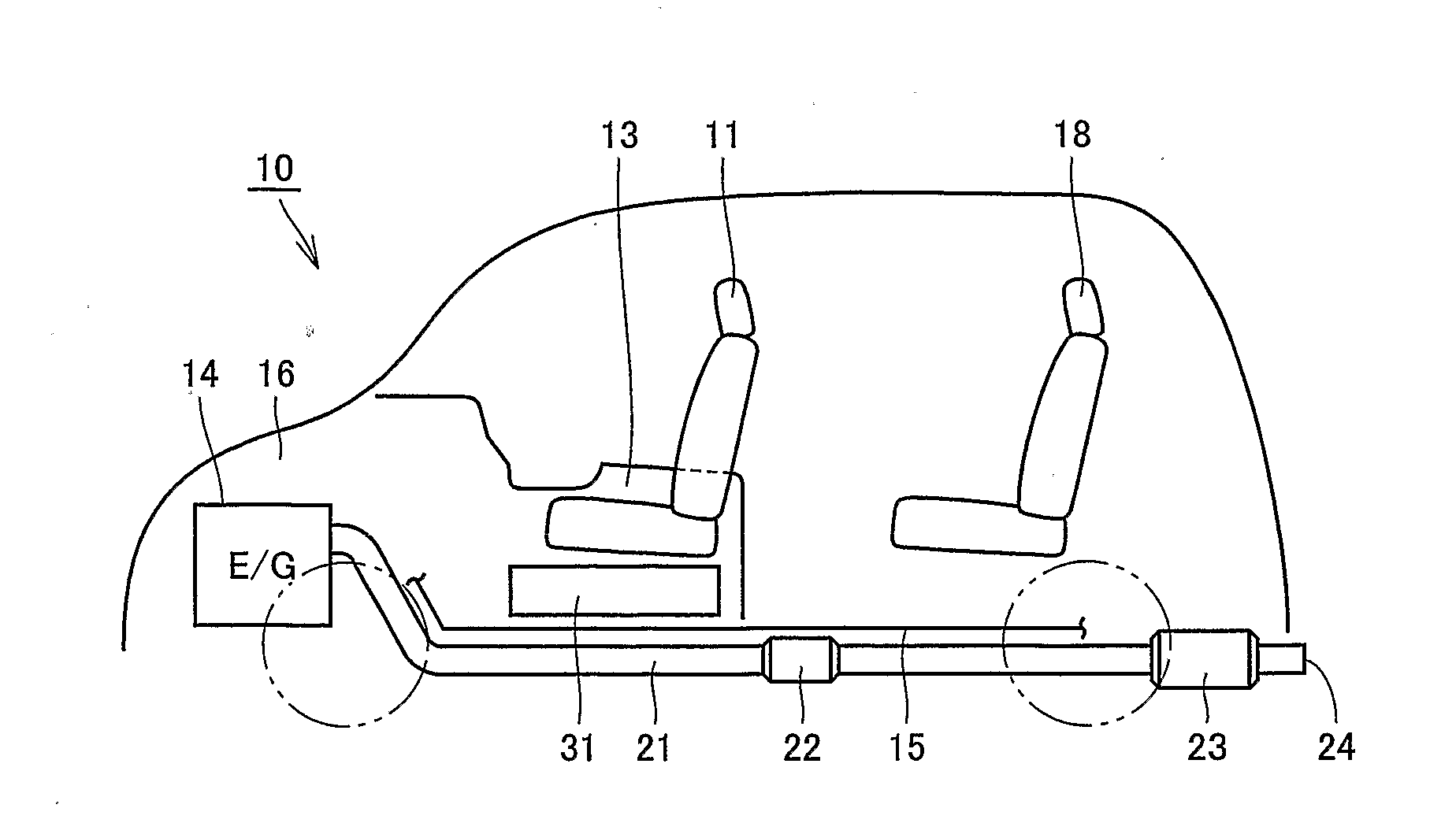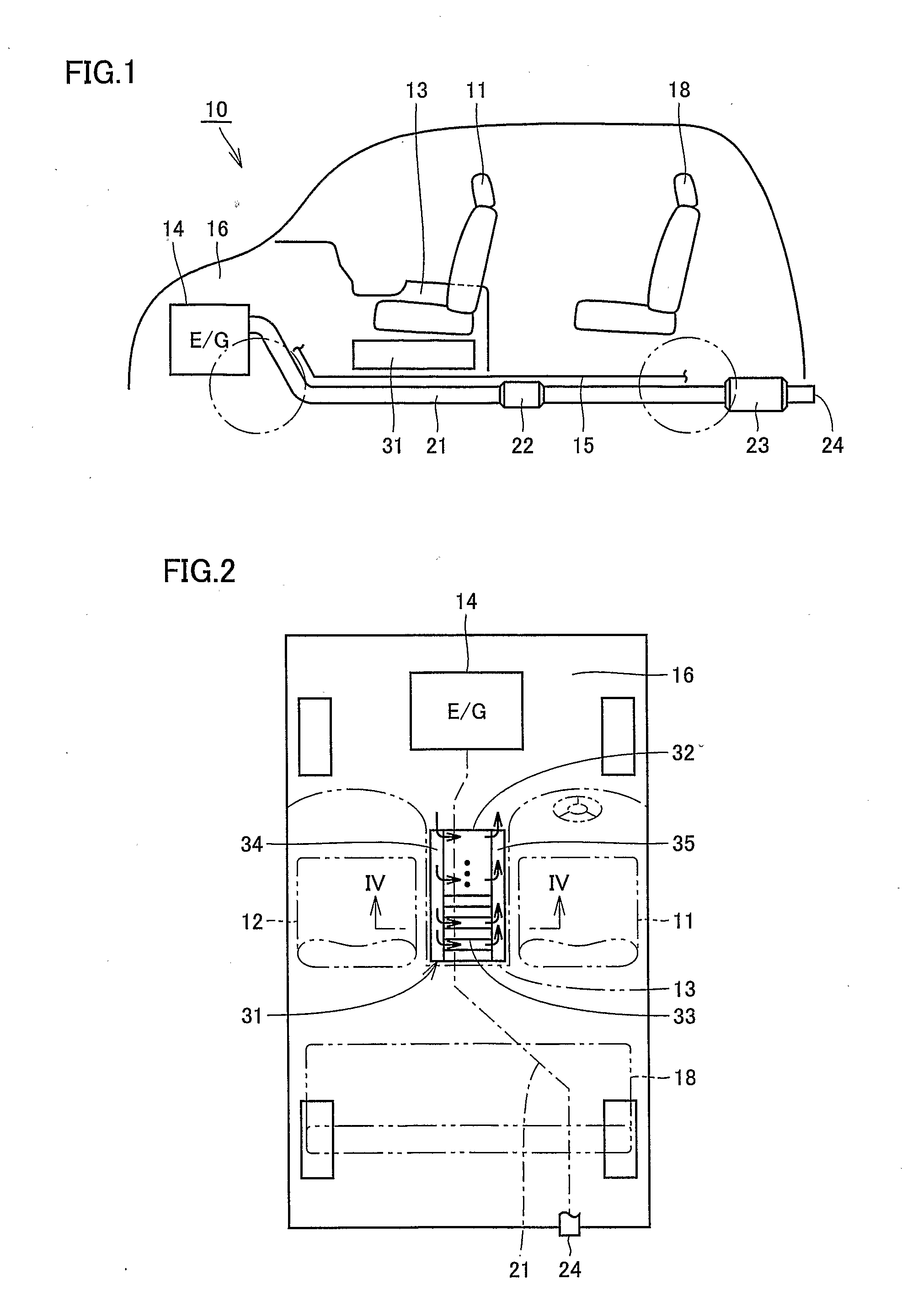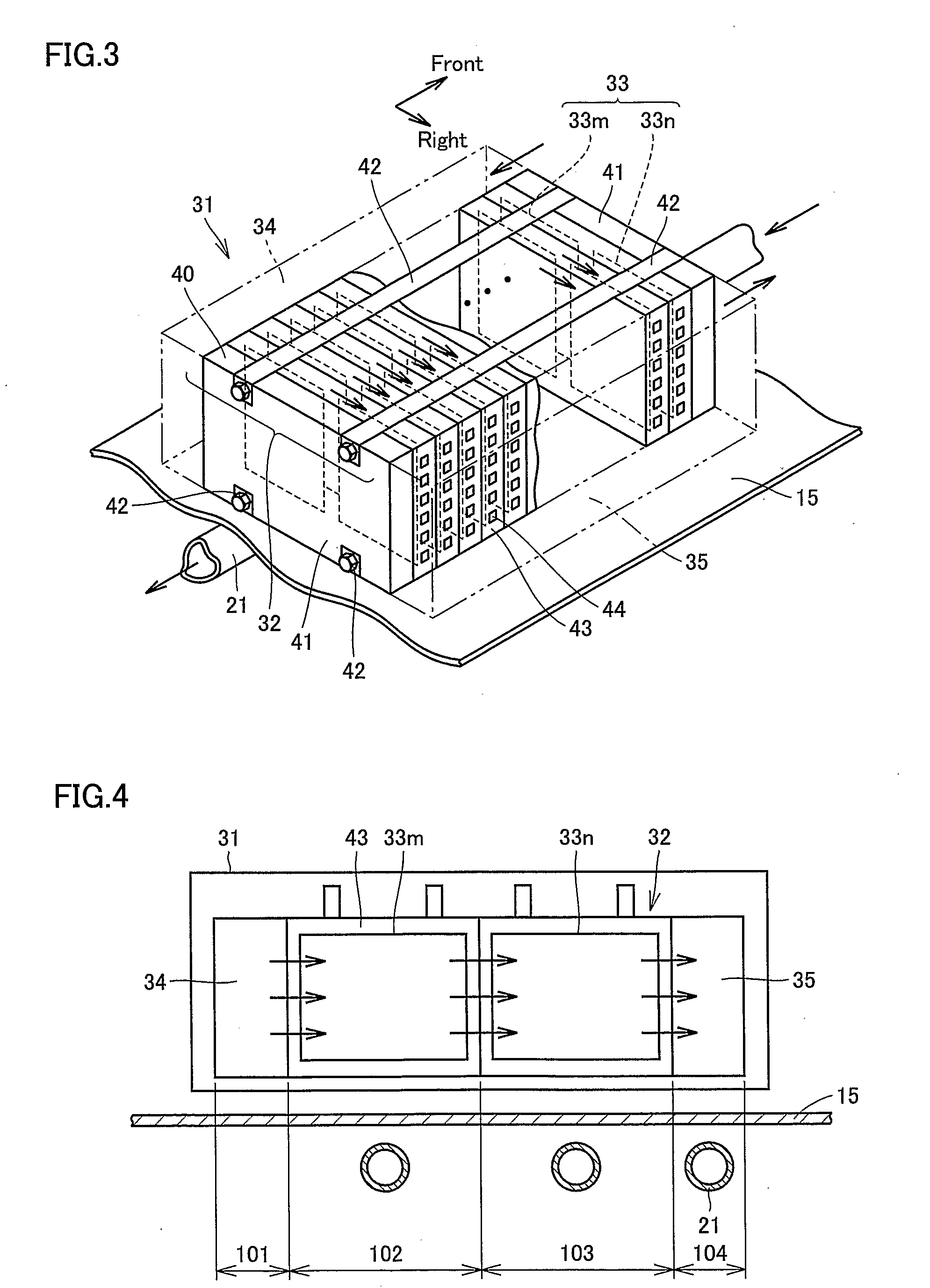Structure of Hybrid Vehicle
a hybrid vehicle and structure technology, applied in the direction of propulsion parts, machines/engines, gas pressure propulsion mounting, etc., can solve the problems of affecting affecting the performance of the internal combustion engine, and bending of the pipe along its route, so as to suppress the reduction in the efficiency of cooling the secondary battery, reduce the effect of bending of the pipe, and reduce the effect of internal combustion engine performan
- Summary
- Abstract
- Description
- Claims
- Application Information
AI Technical Summary
Benefits of technology
Problems solved by technology
Method used
Image
Examples
first embodiment
[0032]FIG. 1 is a side view of a hybrid vehicle in a first embodiment of the present invention. FIG. 2 is a plan view of the hybrid vehicle shown in FIG. 1. Referring to FIGS. 1 and 2, a hybrid vehicle 10 has as its source of motive power a gasoline engine 14 (hereinafter simply referred to as engine 14) and a motor electrically supplied from a secondary battery (battery) 32 that can be charged or discharged.
[0033]Engine 14 is stored in an engine room 16 formed on a front side of the vehicle. To an exhaust manifold of engine 14, an exhaust pipe 21 is connected. Exhaust pipe 21 extends from inside of engine room 16, passing below a floor panel 15, toward the rear of the vehicle. Floor panel 15 constitutes the floor board of the vehicle, and extends facing to the ground. Exhaust pipe 21 has, at its tip extending toward the rear of the vehicle, an exhaust port 24 opening toward the outside of the vehicle. The exhaust gas from engine 14 is guided through exhaust pipe 21 to the rear of t...
second embodiment
[0052]FIG. 7 is a plan view of a hybrid vehicle in a second embodiment of the present invention. FIG. 8 is a cross-sectional view of a battery pack along line VIII-VIII in FIG. 7. In the following, description of the structure being the same as in hybrid vehicle 10 in the first embodiment will not be repeated.
[0053]Referring to FIGS. 7 and 8, in the present embodiment, pairs of battery cells 33m and 33n aligned in parallel are stacked in the vehicle width direction to constitute secondary battery 32. Intake chamber 34 and exhaust chamber 35 are adjacent to secondary battery 32 in a horizontal direction perpendicular to the vehicle width direction along which battery cells 33 are stacked, that is, in the vehicle traveling direction. Exhaust pipe 21 extends immediately below battery pack 31, and extends through region 101 spreading immediately below intake chamber 34, regions 102 and 103 spreading immediately below battery cells 33m and 33n, respectively, and region 104 spreading imme...
third embodiment
[0059]FIG. 9 is a plan view of a hybrid vehicle in a third embodiment of the present invention. In the following, description of the structure being the same as in the hybrid vehicle in the first and second embodiments will not be repeated.
[0060]Referring to FIG. 9, in the present embodiment, battery cells 33 are stacked in the vehicle traveling direction to constitute secondary battery 32. Intake chamber 34 and exhaust chamber 35 are adjacent to secondary battery 32 in a horizontal direction perpendicular to the vehicle traveling direction along which battery cells 33 are stacked, that is, in the vehicle width direction. Exhaust pipe 21 extends immediately below battery pack 31, and three-way catalyst 22 is arranged at a position displaced from a position immediately below battery pack 31. That is, exhaust pipe 21 extends at a position overlapping with battery pack 31 when hybrid vehicle 10 is seen two-dimensionally, and three-way catalyst 22 is arranged at a position not overlappi...
PUM
| Property | Measurement | Unit |
|---|---|---|
| width | aaaaa | aaaaa |
| structure | aaaaa | aaaaa |
| length | aaaaa | aaaaa |
Abstract
Description
Claims
Application Information
 Login to View More
Login to View More - R&D
- Intellectual Property
- Life Sciences
- Materials
- Tech Scout
- Unparalleled Data Quality
- Higher Quality Content
- 60% Fewer Hallucinations
Browse by: Latest US Patents, China's latest patents, Technical Efficacy Thesaurus, Application Domain, Technology Topic, Popular Technical Reports.
© 2025 PatSnap. All rights reserved.Legal|Privacy policy|Modern Slavery Act Transparency Statement|Sitemap|About US| Contact US: help@patsnap.com



